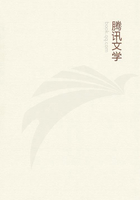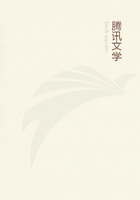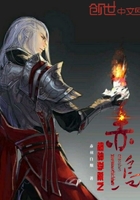The special peculiarities of aerial warfare were of such a nature as to trend, once it had begun, almost inevitably towards social disorganisation. The first of these peculiarities was brought home to the Germans in their attack upon New York; the immense power of destruction an airship has over the thing below, and its relative inability to occupy or police or guard or garrison a surrendered position. Necessarily, in the face of urban populations in a state of economic disorganisation and infuriated and starving, this led to violent and destructive collisions, and even where the air-fleet floated inactive above, there would be civil conflict and passionate disorder below. Nothing comparable to this state of affairs had been known in the previous history of warfare, unless we take such a case as that of a nineteenth century warship attacking some large savage or barbaric settlement, or one of those naval bombardments that disfigure the history of Great Britain in the late eighteenth century. Then, indeed, there had been cruelties and destruction that faintly foreshadowed the horrors of the aerial war. Moreover, before the twentieth century the world had had but one experience, and that a comparatively light one, in the Communist insurrection of Paris, 1871, of the possibilities of a modern urban population under warlike stresses.
A second peculiarity of airship war as it first came to the world that also made for social collapse, was the ineffectiveness of the early air-ships against each other. Upon anything below they could rain explosives in the most deadly fashion, forts and ships and cities lay at their mercy, but unless they were prepared for a suicidal grapple they could do remarkably little mischief to each other. The armament of the huge German airships, big as the biggest mammoth liners afloat, was one machine gun that could easily have been packed up on a couple of mules. In addition, when it became evident that the air must be fought for, the air-sailors were provided with rifles with explosive bullets of oxygen or inflammable substance, but no airship at any time ever carried as much in the way of guns and armour as the smallest gunboat on the navy list had been accustomed to do.
Consequently, when these monsters met in battle, they manoeuvred for the upper place, or grappled and fought like junks, throwing grenades fighting hand to hand in an entirely medieval fashion.
The risks of a collapse and fall on either side came near to balancing in every case the chances of victory. As a consequence, and after their first experiences of battle, one finds a growing tendency on the part of the air-fleet admirals to evade joining battle, and to seek rather the moral advantage of a destructive counter attack.
And if the airships were too ineffective, the early drachenflieger were either too unstable, like the German, or too light, like the Japanese, to produce immediately decisive results. Later, it is true, the Brazilians launched a flying-machine of a type and scale that was capable of dealing with an airship, but they built only three or four, they operated only in South America, and they vanished from history untraceably in the time when world-bankruptcy put a stop to all further engineering production on any considerable scale.
The third peculiarity of aerial warfare was that it was at once enormously destructive and entirely indecisive. It had this unique feature, that both sides lay open to punitive attack. In all previous forms of war, both by land and sea, the losing side was speedily unable to raid its antagonist's territory and the communications. One fought on a "front," and behind that front the winner's supplies and resources, his towns and factories and capital, the peace of his country, were secure. If the war was a naval one, you destroyed your enemy's battle fleet and then blockaded his ports, secured his coaling stations, and hunted down any stray cruisers that threatened your ports of commerce.
But to blockade and watch a coastline is one thing, to blockade and watch the whole surface of a country is another, and cruisers and privateers are things that take long to make, that cannot be packed up and hidden and carried unostentatiously from point to point. In aerial war the stronger side, even supposing it destroyed the main battle fleet of the weaker, had then either to patrol and watch or destroy every possible point at which he might produce another and perhaps a novel and more deadly form of flyer. It meant darkening his air with airships. It meant building them by the thousand and making aeronauts by the.hundred thousand. A small uninitated airship could be hidden in a railway shed, in a village street, in a wood; a flying machine is even less conspicuous.
And in the air are no streets, no channels, no point where one can say of an antagonist, "If he wants to reach my capital he must come by here." In the air all directions lead everywhere.
Consequently it was impossible to end a war by any of the established methods. A, having outnumbered and overwhelmed B, hovers, a thousand airships strong, over his capital, threatening to bombard it unless B submits. B replies by wireless telegraphy that he is now in the act of bombarding the chief manufacturing city of A by means of three raider airships. A denounces B's raiders as pirates and so forth, bombards B's capital, and sets off to hunt down B's airships, while B, in a state of passionate emotion and heroic unconquerableness, sets to work amidst his ruins, making fresh airships and explosives for the benefit of A.
The war became perforce a universal guerilla war, a war inextricably involving civilians and homes and all the apparatus of social life.
These aspects of aerial fighting took the world by surprise.















